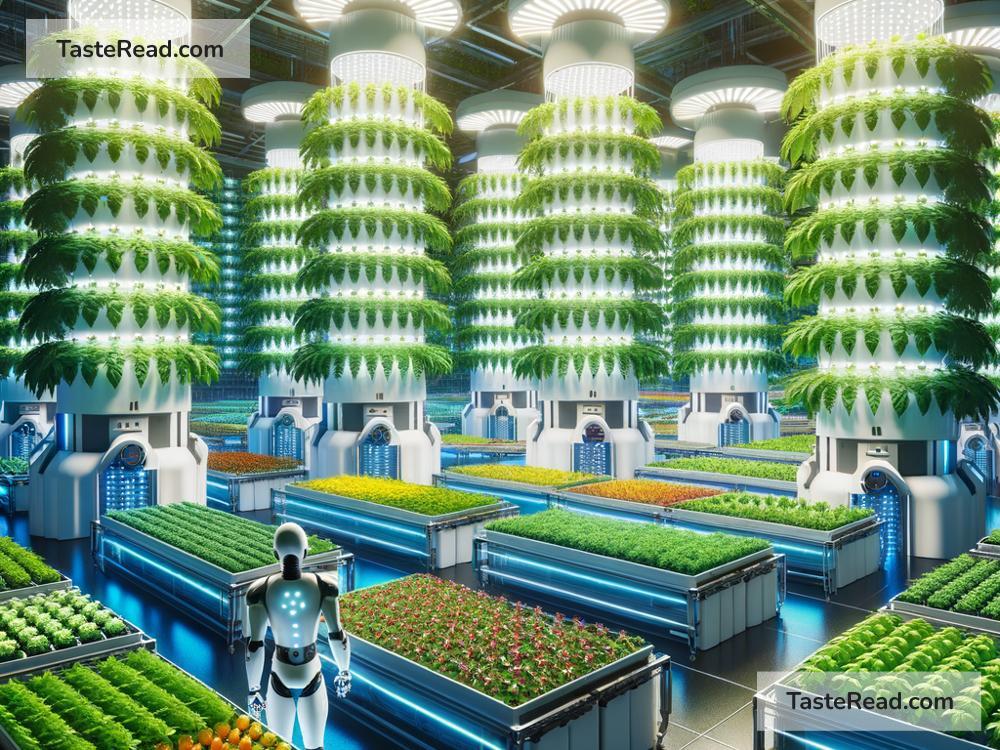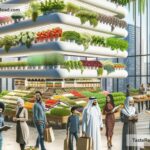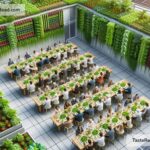The Future of Food and Sustainable Agriculture Models
The way we grow, produce, and consume food is changing rapidly. With the global population expected to reach almost 10 billion by 2050, the need for sustainable food systems has never been more urgent. Current agricultural practices often harm the planet, contributing to deforestation, soil degradation, water shortages, and climate change. At the same time, millions of people go hungry every day. So, the big question is: how can we produce enough food to feed everyone without harming the environment? The answer lies in sustainable agriculture models and innovative food solutions.
What Is Sustainable Agriculture?
Simply put, sustainable agriculture aims to produce food while protecting the environment, preserving natural resources, and ensuring that farming can continue for future generations. It’s about growing crops and raising animals in ways that are good for the planet, good for people, and economically viable for farmers.
Challenges in Today’s Food Systems
Before we talk about the future, let’s understand the problems with current food systems:
-
Environmental Damage: Traditional farming methods often rely heavily on chemical fertilizers and pesticides, which can harm soil health, water quality, and biodiversity. Deforestation to make room for crops or livestock is also a major issue.
-
Climate Change: Agriculture is responsible for about 25% of global greenhouse gas emissions. Raising cattle for beef and dairy, in particular, produces a lot of methane, a gas that worsens global warming.
-
Water Scarcity: Agriculture uses about 70% of the world’s freshwater. With growing populations and climate change, water is becoming more limited.
-
Food Waste: One-third of all food produced globally ends up being thrown away, leading to wasted resources, energy, and money.
-
Hunger and Inequality: While some regions struggle with obesity and overconsumption, others face food shortages and malnutrition. The imbalance in food distribution is a global issue.
The Future of Food
Thankfully, scientists, farmers, and policymakers are working on solutions to create a more sustainable food future. Let’s explore some exciting ideas and practices.
1. Regenerative Agriculture
Regenerative agriculture goes a step further than sustainable farming. It doesn’t just aim to minimize harm; it actively restores and improves the health of soil and ecosystems. Farmers who use regenerative practices grow crops in ways that boost soil fertility, increase carbon sequestration (absorbing carbon dioxide from the atmosphere), and protect biodiversity. Techniques include crop rotation, cover cropping, and reduced tilling.
Healthy soil is key to a sustainable future because it can store more water, produce better crops, and reduce the need for chemical fertilizers.
2. Vertical Farming
Imagine growing food in tall buildings instead of flat fields. That’s the concept of vertical farming! In vertical farms, crops are grown indoors in stacked layers, often without soil. Instead, they use hydroponics (water-based growing systems) or aeroponics (using nutrient-filled mist) to feed the plants.
Vertical farms use less water than traditional farming and can be set up in urban areas, closer to consumers. This reduces transportation costs and emissions. While vertical farming is still expensive to scale, it has the potential to revolutionize food production in cities.
3. Alternative Proteins
Meat production is resource-intensive and contributes heavily to greenhouse gas emissions. As a result, scientists are exploring alternative protein sources to reduce the environmental impact associated with traditional meat.
- Plant-Based Proteins: Products like tofu, tempeh, and plant-based burgers made from pea or soy protein are becoming more popular.
- Lab-Grown Meat: Also known as cultured meat, this involves growing meat cells in a lab without raising animals. It’s still in the early stages but could reduce the need for large-scale livestock farming.
- Insects: While this may sound strange to some people, insects are a highly nutritious and sustainable protein source. They require less land, water, and food compared to traditional livestock.
4. Precision Agriculture
Precision agriculture uses technology to make farming smarter and more efficient. Tools like drones, sensors, and AI (artificial intelligence) help farmers monitor their crops and animals more closely. For example, drones can scan fields to identify areas that need water or fertilizer, reducing waste and improving yields. These technologies can help farmers grow more food with fewer resources.
5. Local and Urban Farming
Growing food in local communities and urban areas can reduce the environmental impact of food transportation while promoting healthier diets. Community gardens, rooftop farming, and indoor growing systems make it easier for people in cities to access fresh produce. They also create opportunities for education and reconnecting people with the food they eat.
6. Reducing Food Waste
Cutting down food waste is one of the easiest ways to create a more sustainable food future. Innovations like apps that connect businesses with excess food to consumers or nonprofits are helping reduce waste. At home, people can learn to store food properly and compost leftovers instead of throwing them away.
What Can You Do?
While governments and industries play an important role, individuals can also contribute to a sustainable food future. Here are some simple steps you can take:
– Support local farmers by buying fresh produce from markets.
– Eat less meat and try plant-based foods.
– Reduce food waste by planning meals and composting scraps.
– Choose sustainably produced products (like fair-trade coffee or organic fruits).
– Educate yourself and others about food sustainability.
Conclusion
The future of food and agriculture is full of exciting possibilities. By combining technology, innovation, and traditional wisdom, we can create food systems that are better for both people and the planet. Sustainable agriculture models like regenerative farming, vertical farms, and alternative proteins have the potential to feed the growing population while protecting natural resources. Everyone, from policymakers to everyday consumers, has a role to play in building a healthier and more sustainable future.
The choices we make today will shape what’s on our plates tomorrow. Together, we can work toward a world with enough food for everyone without harming the planet we depend on.


